Applying iodine to strawberries
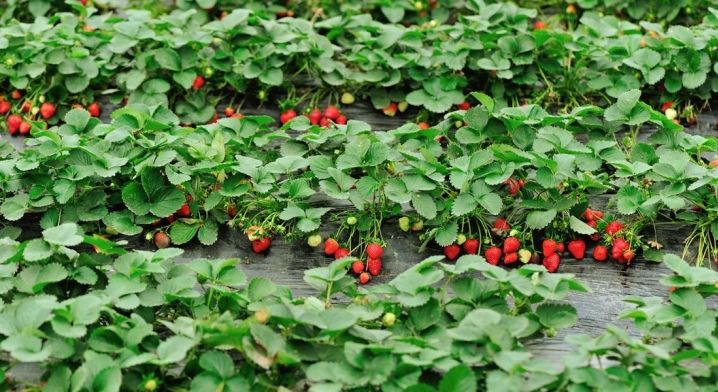
For fertilizing and processing strawberry bushes, gardeners often resort to using various means, including iodine. What are the pros and cons of this substance, and how to use it in the garden, will be discussed in the article.
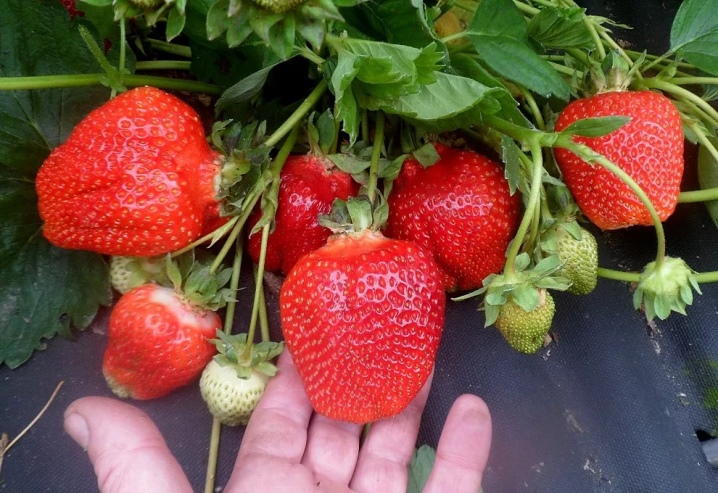
Advantages and disadvantages
Iodine can be used not only as an antiseptic or antiviral agent. It can also be used in the vegetable garden, for example for strawberries.
Of the advantages of iodine, one can single out its environmental friendliness. It is perfect as a top dressing and can have a beneficial effect on the growth and development of plantings. This fertilizer is often used in the spring before the flowering of the plant. Iodine is also able to regulate the work of enzymes that speed up metabolic processes. That is, this substance promotes early and abundant flowering and early ripening of fruits. In addition, iodine will improve their taste and increase the shelf life of the fruit.
It is worth saying that iodine is a good antiseptic and antiviral agent for plants. So, an iodine-based solution can help eliminate dark spots on foliage, fungal diseases. It also enhances plant immunity and is useful in the fight against harmful insects.
Treating with an iodine solution will help you eliminate May beetle larvae and other parasites.
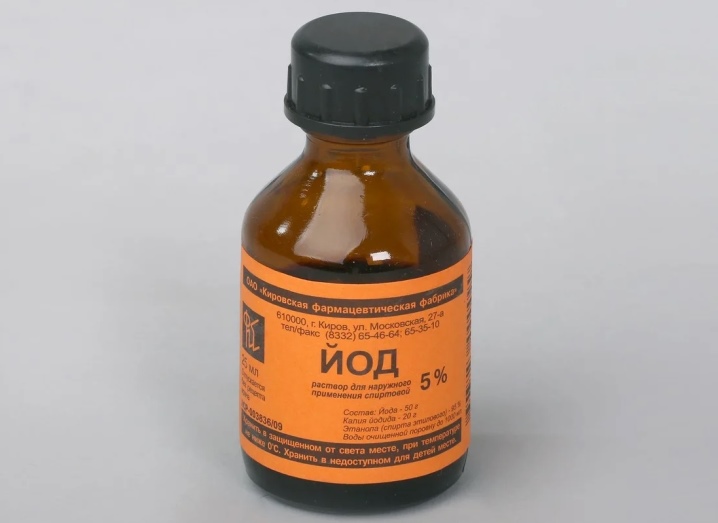
However, there are also disadvantages to using iodine. So, if the concentration of the product is incorrect, there is a risk of causing great harm to the strawberry bushes: the strawberries will burn, the foliage and buds will dry out, and the harvest will drop dramatically. Moreover, it is impossible to part with this substance. When processed, it is able to penetrate into plant tissues. Subsequently, iodine will accumulate in the strawberry berries. This can have a bad effect on the health of a person who will eat such fruits, since an excess of iodine is harmful to the body.
If you use iodine in moderation, do not overdo it, then it will have a beneficial effect on the plant, which in the end will delight you with a rich and healthy strawberry harvest.
Using iodine for the preparation of dressings and prophylactic agents against harmful insects and diseases, it is worth observing safety precautions. If you inhale a large amount of iodine vapor, you may experience a headache and irritation of the mucous membrane.
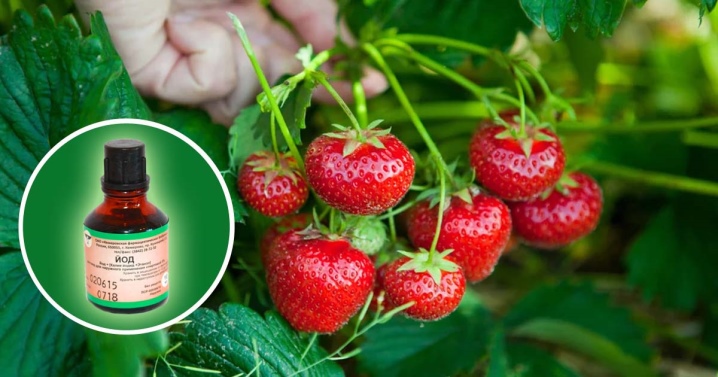
Use as fertilizer
Feeding strawberries usually takes place several times per season. The first - in early spring, the second - before flowering, when buds begin to form, the next - in the period after fruiting, in the summer. Some summer residents also use preventive feeding of seedlings in order to accurately eliminate possible diseases and parasites.
Solution preparation options
There are several ways to prepare a solution based on a pharmaceutical agent such as iodine. For the period before flowering, a mixture from a bucket of water is perfect, in which you need to dilute 30 drops of iodine, a spoonful of boric acid and a glass of ash. The tool should be infused for several hours, after which it must be mixed and used to water the bushes, without touching the strawberry foliage. For each such bush, you need to spend about 500 milliliters of funds.
For preventive feeding of seedlings, you can use a solution made from 15 liters of rainwater and 5 drops of iodine. Before planting plants in a permanent place, the ground must be thoroughly watered with fresh solution. h
Treating with an iodine solution will help you eliminate May beetle larvae and other parasites.
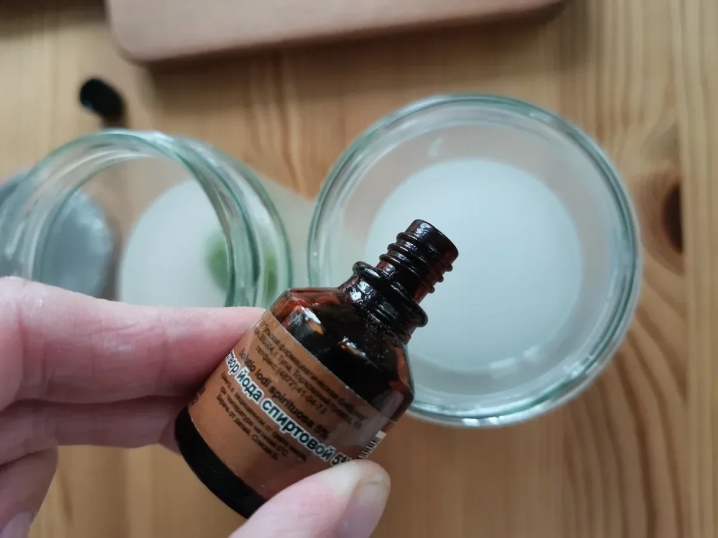
You can feed strawberries with a solution with a combination of iodine and potassium permanganate, which is also an excellent fertilizer option. So, for spraying a plant, a solution of 0.5 teaspoon of dissolved acid, 10 liters of water, a gram of potassium permanganate and 15 drops of iodine is suitable.
For root feeding, the concentration of the mixture can be increased. This will require 10 grams of boric acid, 10 liters of water, 3 grams of manganese and about 40 drops of iodine.
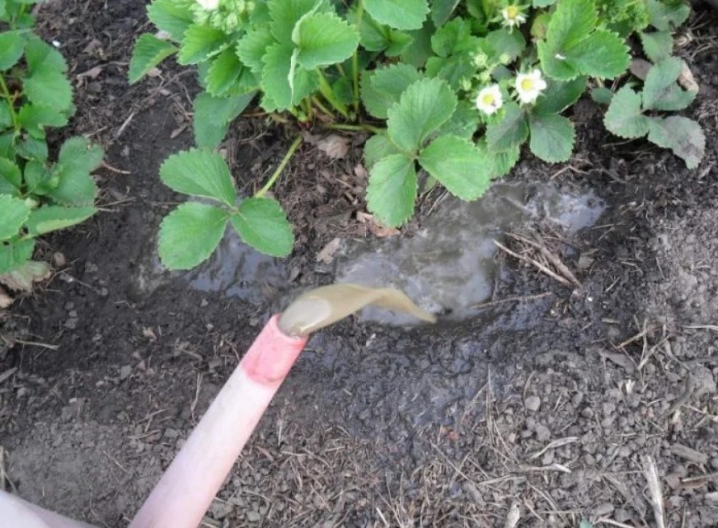
Features of the introduction
In order to feed the plant and not harm it, the ground must be well saturated with moisture before that, otherwise there is a high risk that the strawberry will get a root burn, which will further affect its growth and development in a poor way. Water the soil thoroughly in order to moisturize it well. Fertilization is started only a couple of hours after moistening.
When watering, it is recommended not to fall on the root areas in order to prevent burns. Wherein it is important not to overdo it with the amount of solution, otherwise there is a risk of flooding the bush and harming it.
If you use a foliar spray, then you need to process it on both sides, and after the appearance of new leaves, this procedure must be repeated.

Application for protection against diseases
Iodine is an excellent antiviral agent for plants. He is able to prevent many diseases of strawberries, especially when it comes to fungus.
To prepare a mixture that will help fight, you will need 10 liters of water, a liter of milk or whey, and 10 drops of iodine. All this is thoroughly mixed, after which the strawberry foliage is sprayed. This is done mainly in the spring, while the procedure should be carried out either in the evening or in cloudy weather in order to eliminate the risk of sunburn on the foliage. Such treatment can save the plant from various fungal infections, and will also prevent the occurrence of powdery mildew.
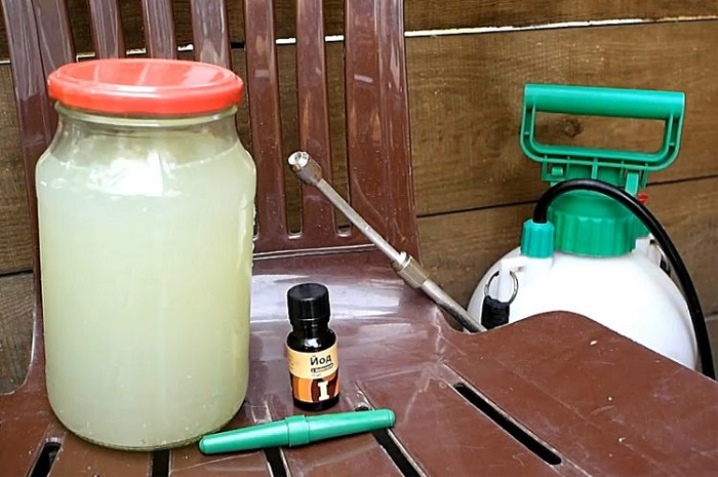
A solution based on milk and iodine can also help with gray mold and red spot. You will need ½ a bed of 10% iodine tincture, a liter of milk, a teaspoon of laundry soap and 10 liters of water. The components must be mixed well with each other until a homogeneous mass is obtained. Further, you can carry out the processing of plants. Such a solution will show itself perfectly in the early stages of fungal diseases.
Another working solution, which will serve as a good prevention of powdery mildew, can be prepared from 10 drops of iodine, 10 liters of water and a liter of whey. Spraying strawberry bushes with this solution is required in the evening at least 3 times per season.
You can add a little soap to each of these solutions. It will be able to fix the mixture to the foliage, thereby creating a protective film. This will prevent harmful bacteria from entering the planting tissue and infecting it.
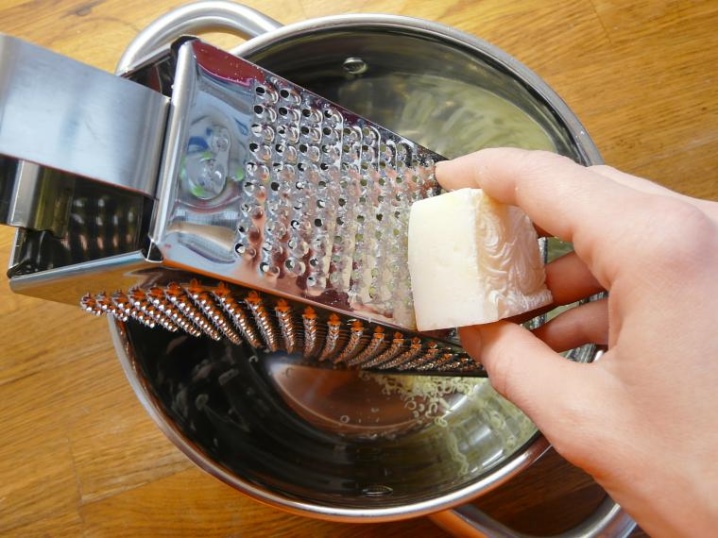
Pest prevention
The iodine solution is able to save strawberries not only from fungal diseases, but also from harmful insects, including the larvae of the May beetle, weevil beetle, worms, and aphids.
To destroy them, it is recommended to loosen the strawberry beds in early spring and carefully spill them with a solution of iodine. It is not difficult to make it; it requires 15-20 drops of iodine to dissolve in 10 liters of water. After that, as a preventive measure, the leaves of the plant must be treated separately in order to enhance the effectiveness of the mixture.
Before the budding stage, you can prepare a mixture of 20 drops of iodine and 500 milliliters of whey. All this is mixed, after which the foliage of the plant is sprayed on both sides. Particular attention should be paid to the lower part of the leaf plate, since most of the parasites usually accumulate there.
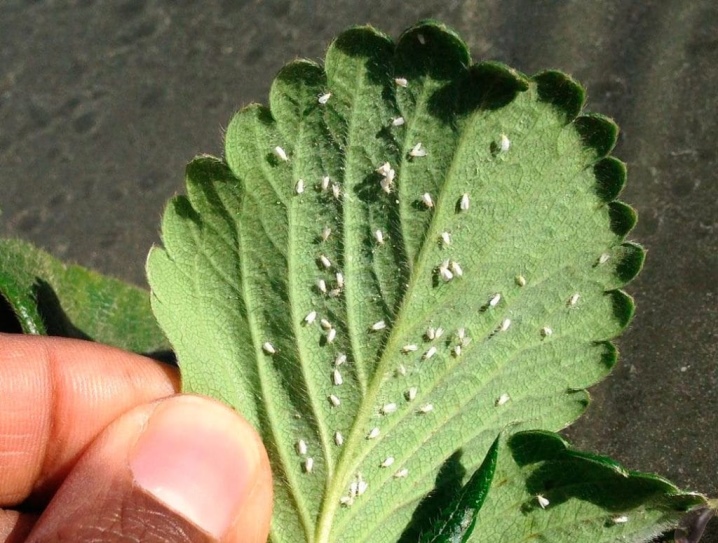
Please note that this treatment is only suitable before the beginning of the fruiting period. Further, during fruiting and until its very end, it is impossible to use iodine-based solutions, since the berries will begin to accumulate this substance, which in the future may negatively affect human health.
It is also worth saying that iodine is a good way to fight parasites, but if they managed to breed, then this substance in this case will be ineffective, and you will have to use more radical methods of struggle - chemicals and biological preparations.
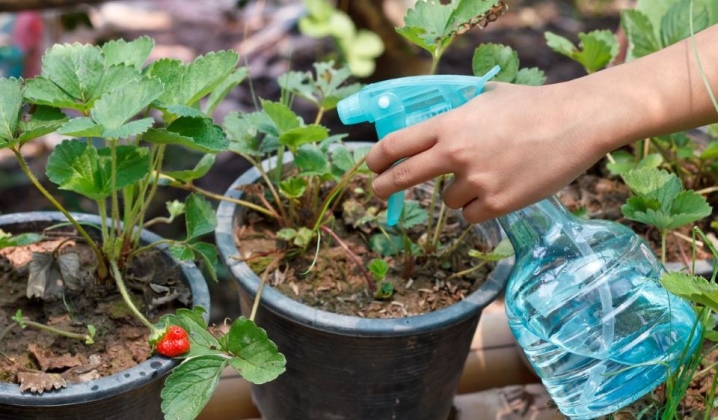
For the use of iodine for strawberries, see the video.













The comment was sent successfully.